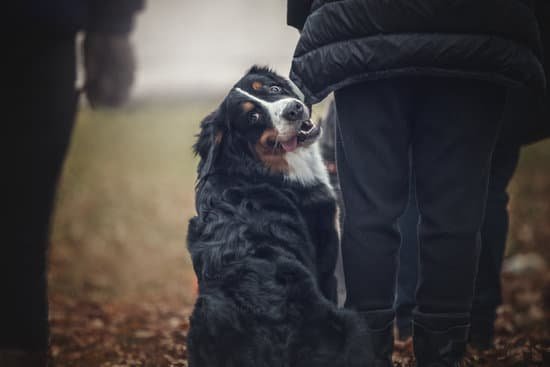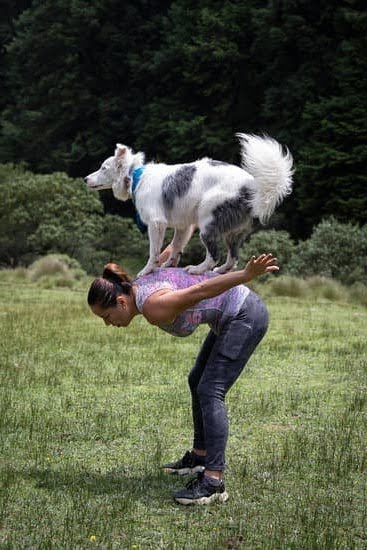How can I train my dog to stop chasing? Many pet owners have asked themselves this question at one point or another. Understanding the root of the behavior is crucial in addressing and modifying your dog’s chasing tendencies.
Dogs chase for various reasons, from natural instincts to boredom, and it’s important to identify the triggers that prompt your dog to engage in this behavior. By learning more about why dogs chase, you can begin to develop a training plan that focuses on redirecting their behavior in a positive and effective manner.
Identifying triggers that prompt your dog to chase is an essential step in curbing this behavior. Whether it’s a squirrel running across the backyard or a bike passing by on a walk, understanding what sets off your dog’s chasing instincts will help you create a safe and controlled environment. By recognizing these triggers, you can then begin to implement training techniques focused on positive reinforcement, redirection, and consistency.
Training your dog not to chase requires patience, dedication, and a strong commitment to establishing and maintaining boundaries. Positive reinforcement techniques play a significant role in rewarding good behavior and encouraging your dog to engage in alternative activities. Redirecting their attention with distraction techniques and providing them with alternative activities will help shift their focus away from chasing.
It’s also essential to be consistent in enforcing boundaries and commands, as well as seeking professional help if needed. Taking these steps will not only prevent chasing behaviors but also strengthen the bond between you and your furry companion.
Identifying Triggers
Understanding Your Dog’s Instincts
Dogs have a natural instinct to chase, which is rooted in their predatory behavior. Understanding this innate instinct is crucial in identifying triggers that prompt your dog to chase. Whether it’s a squirrel, a car, or even another animal, recognizing what sets off this behavior in your dog is the first step in addressing the issue.
Observing and Noting Patterns
To effectively identify triggers, it’s important to observe and note any patterns in your dog’s behavior. Keep track of the specific situations or stimuli that lead to chasing behavior. Is it primarily during walks? When playing at the park? By paying close attention to these patterns, you can start to pinpoint what prompts your dog to chase.
Seeking Professional Assistance
Sometimes identifying triggers may not be as straightforward as it seems. If you find it challenging to determine what prompts your dog’s chasing behavior, seeking the assistance of a professional trainer can be beneficial. They can help you analyze and understand your dog’s behavior more objectively, ultimately leading to more effective training methods tailored to your dog’s specific triggers.
Remember, understanding what prompts your dog to chase is the first step in addressing this behavior effectively. By taking note of their instincts, observing patterns, and seeking professional help if needed, you can better equip yourself with the knowledge and tools necessary to train your dog on how not to chase.
The Importance of Training
Establishing Boundaries and Rules
Training your dog to stop chasing is essential for creating a safe and controlled environment for both your pet and those around them. One of the first steps in this process is establishing clear boundaries and rules. These guidelines can help your dog understand what behavior is acceptable and what is not. For example, teaching your dog to come when called and to stay by your side in certain situations can prevent them from chasing after other animals or people.
Setting Up Training Sessions
Consistent training sessions are key to effectively teaching your dog to stop chasing. These sessions should be structured, with clear goals and rewards for positive behavior. By using treats, toys, or praise as positive reinforcement tools, you can motivate your dog to follow commands and resist the urge to chase after distractions. It’s important to be patient during these training sessions, as it may take time for your dog to fully grasp the concept of not chasing.
Creating a Safe Environment
In addition to training, creating a safe environment for your dog can also help minimize their opportunities to chase. This may include using a leash or harness during walks, securing your backyard with fences or gates, or keeping an eye on them during outdoor activities. By reducing the chances for your dog to engage in chasing behavior, you can better manage their actions while they continue learning through training sessions.
Positive Reinforcement Techniques
When it comes to training your dog to stop chasing, positive reinforcement can be a powerful tool. This technique involves rewarding your dog for exhibiting the desired behavior, in this case, not chasing. By using positive reinforcement, you can encourage your dog to repeat good behavior and discourage the chasing behavior.
Here are some effective positive reinforcement techniques for training your dog to stop chasing:
- Use treats: When your dog refrains from chasing, immediately reward them with a tasty treat. This will help them associate not chasing with something positive.
- Give praise: Dogs thrive on verbal affirmation, so be sure to shower your furry friend with praise when they exhibit good behavior. A simple “good boy/girl” or a pat on the head can go a long way.
- Playtime: Spend quality time playing with your dog as a reward for not chasing. Engaging in fun activities together can strengthen the bond between you and reinforce their good behavior.
Consistency is crucial when using positive reinforcement. Be sure to reward your dog every time they display the desired behavior of not chasing. Over time, they will come to understand that not chasing leads to pleasant rewards and recognition from you.
By implementing these positive reinforcement techniques, you can effectively train your dog to stop chasing while nurturing a healthy and loving relationship with them. Remember that patience and persistence are key in any training process, and celebrating even small progress is essential in building trust and understanding between you and your canine companion.
Redirecting the Behavior
When it comes to training your dog to stop chasing, redirecting their behavior through distraction and alternative activities can be an effective approach. Dogs often chase because they are seeking stimulation or are simply responding to their natural instincts. By providing alternative activities and distractions, you can redirect their focus and discourage the chasing behavior.
One effective way to redirect your dog’s chasing behavior is by engaging them in activities that stimulate their mind and body. Taking your dog for regular walks, playing interactive games such as fetch or tug-of-war, and providing them with puzzle toys can help channel their energy into more appropriate outlets.
Additionally, participating in obedience training classes or agility training can also provide mental and physical stimulation for your dog, ultimately reducing the likelihood of them engaging in chasing behavior.
Another important aspect of redirecting your dog’s behavior is to eliminate triggers that prompt the chasing instinct. For example, if your dog tends to chase moving objects such as cars or bicycles, it’s crucial to keep them on a leash or within a securely fenced area when outside. By removing access to triggers and providing alternative activities, you can effectively redirect your dog’s attention and discourage chasing behavior.
It’s important to remember that consistency is key when it comes to redirecting your dog’s behavior. By consistently providing alternative activities and distractions while avoiding triggering situations, you can help retrain your dog’s instincts and create a safer and more controlled environment for both you and your pet.
| Training Method | Effectiveness |
|---|---|
| Engaging in regular walks and interactive games | Highly effective in providing mental and physical stimulation |
| Obedience training classes or agility training | Effective in reducing likelihood of chasing behavior |
| Avoiding triggering situations | Highly effective in preventing the chasing instinct |
Consistency Is Key
When it comes to training your dog to stop chasing, consistency is essential. Dogs thrive on routine and clear boundaries, so it’s important to set rules and stick to them. Consistency in your behavior and the rules you establish will help your dog understand what is expected of them and what behaviors are not acceptable. This will create a safe and controlled environment for your dog, reducing the likelihood of chasing behavior.
One way to establish consistency is by setting clear boundaries within your home and outdoor space. This can include designating areas where chasing behavior is not allowed, such as around busy roads or in communal areas where other animals may be present. Using physical boundaries like fences or leashes can also help reinforce these limits. Consistently enforcing these boundaries will help your dog understand where they are allowed to roam freely and where they must refrain from chasing.
In addition to physical boundaries, consistent verbal cues and commands can also help reinforce the message that chasing is not acceptable. Using the same command or cue every time your dog exhibits chasing behavior will help them understand that this action is not permitted. Consistently redirecting their attention to alternative activities using these commands can also help break the cycle of chasing behavior.
| Consistency Techniques | Benefits |
|---|---|
| Setting clear boundaries | Creates a safe environment for the dog |
| Using consistent verbal cues | Reinforces the message that chasing is not allowed |
| Consistently redirecting attention | Helps break the cycle of chasing behavior |
Professional Help
Seeking professional help for training your dog to stop chasing can be extremely beneficial. A professional dog trainer has the knowledge and experience to address the root causes of your dog’s behavior and create a personalized training plan. Here are some benefits of seeking a trainer:
- Expertise: Professional dog trainers have extensive knowledge of canine behavior and training techniques. They can analyze your dog’s specific chasing behavior and develop a tailored plan to address it.
- Personalized Training: A trainer can provide individualized attention to you and your dog, taking into account your unique situation, lifestyle, and goals for stopping the chasing behavior.
- Proper Equipment: Trainers often have access to specialized equipment, such as long lines or agility courses, that can be used to safely train your dog to stop chasing.
Trainers also offer guidance and support for you as the owner, helping you understand how to effectively communicate with and train your dog. They can teach you how to use positive reinforcement techniques, redirect your dog’s behavior, and establish consistent boundaries.
Whether through private sessions or group classes, working with a professional trainer can not only effectively stop the chasing behavior but also strengthen the bond between you and your furry companion. With their help, you can celebrate progress and enjoy a well-behaved, happy pup.
Conclusion
In conclusion, addressing and training your dog to stop chasing can be a challenging but rewarding process. By understanding the root of the behavior and identifying triggers, you can begin to create a safe and controlled environment for your pet. Using positive reinforcement techniques and redirecting their behavior towards alternative activities will help in modifying their behavior. Consistency is key when it comes to training, so establishing and maintaining boundaries is crucial in reinforcing good behavior.
As you go through this training process, it’s important to celebrate the progress your dog makes. Whether it’s small steps or big milestones, recognizing their achievements will reinforce the positive changes they are making. Not only does this build confidence in your pet, but it also strengthens the bond between the two of you.
While tackling this issue on your own can be an option, seeking professional help from a certified dog trainer can provide invaluable guidance and support. A trainer can offer personalized solutions and tailored training methods that are specific to your dog’s needs. Remember that every dog is unique, so what works for one may not work for another.
Overall, training your dog to stop chasing requires patience, dedication, and understanding. It’s a journey that ultimately leads to a stronger bond with your furry companion as you work together towards creating a harmonious relationship based on trust and respect.
Frequently Asked Questions
How Do I Get My Dog to Stop Chasing?
One way to get your dog to stop chasing is through proper training. You can use commands like “stop” or “leave it” to interrupt their behavior. It’s also important to provide them with enough physical and mental stimulation.
Do Dogs Grow Out of Chasing?
Whether or not dogs grow out of chasing largely depends on the individual dog and their training. With proper training and consistent reinforcement, some dogs may learn to control their chasing instincts as they mature.
How Do You Deal With a Chasing Dog?
Dealing with a chasing dog involves a combination of training, management, and providing appropriate outlets for their energy. Training should focus on teaching your dog alternative behaviors and commands to redirect their attention away from chasing.
Additionally, managing the environment by using leashes or fences can help prevent unwanted chasing behavior. Providing regular exercise and mental stimulation can also reduce the likelihood of excessive chasing behaviors.

Welcome to the blog! I am a professional dog trainer and have been working with dogs for many years. In this blog, I will be discussing various topics related to dog training, including tips, tricks, and advice. I hope you find this information helpful and informative. Thanks for reading!





